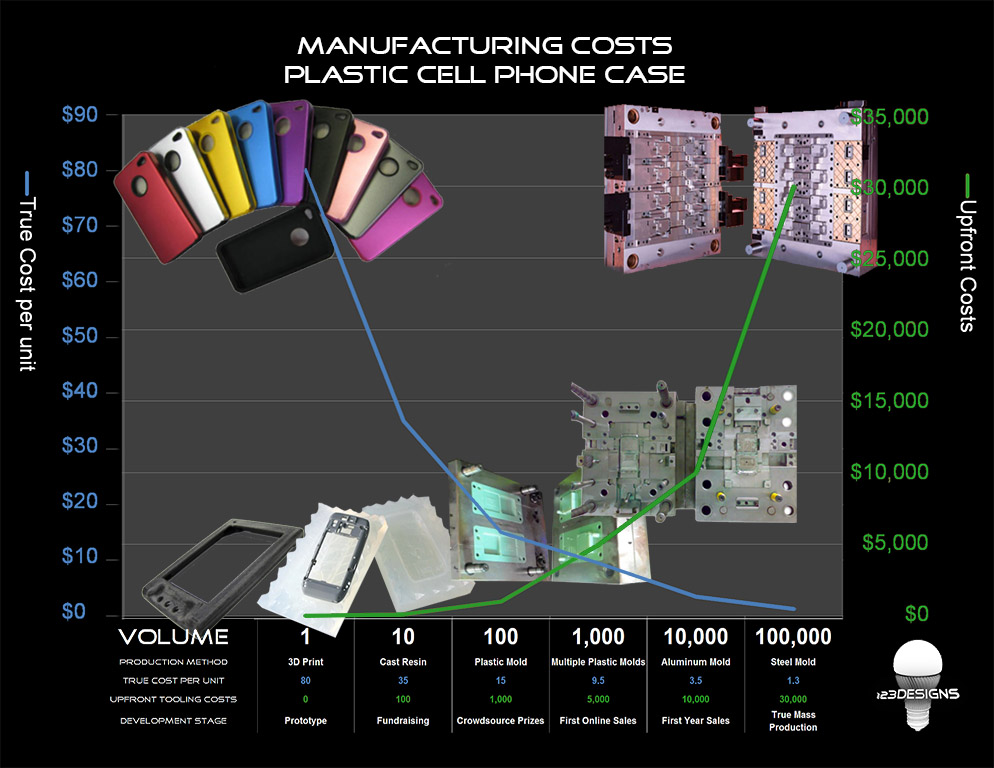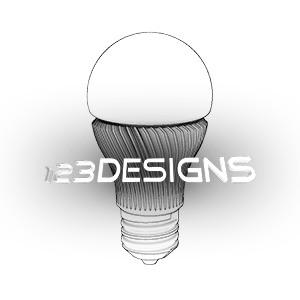
The upfront costs of making a cheap plastic product often comes as a bit of a shock to new product developers. The basic reason for this is that steel is expensive, especially the high quality steel used in plastic injection molding machines. The metal mold tool used to make inexpensive cell phone cases can cost more (and contain more steel) than a car.
As production volume rises, so do upfront tooling costs. More investment in your injection molding tooling yields decreased cost per unit, and higher volumes.
- UPFRONT COSTS = This pays for the fabrication of a mold tool. The tool material (plastic, aluminum, or high grade steel) is the single largest cost of developing most plastic parts. It’s often said, “The first part costs you $100k. The second costs you $1.”
- TRUE COST PER UNIT = All the costs of manufacturing, including the upfront tooling costs, divided by the volume. Characterized by the equation; Upfront Costs + (Cost per unit X Volume) / Volume. You may more commonly see just the Cost per Unit, basically the cost of plastic, specified when describing plastic production costs. This value includes that and the upfront cost of the tooling combined.
- VOLUME = Number of parts or units to be fabricated.
123DESIGNS.biz created this infographic because most clients find the costs of true mass production daunting, yet attainable with proper business planning. We want inventors to understand the real costs of bringing a new plastic product to market, and why fundraising is such an important part.


One thought on “Why cheap plastic is so expensive: Infographic”
excellent illustration.